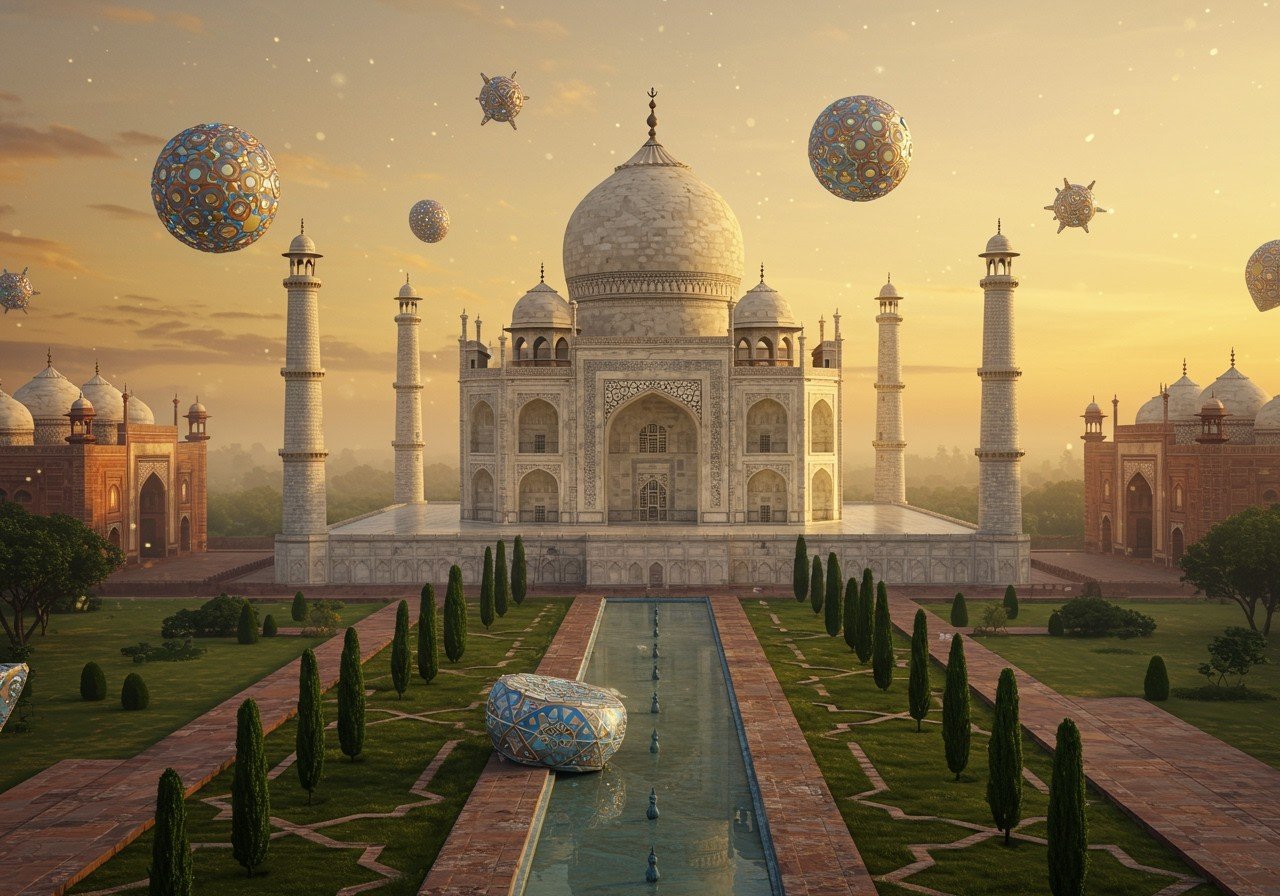
The Mughal Empire, reigning over significant portions of the Indian subcontinent from 1526 to 1857, left an enduring legacy on Indian architecture. This blog post delves into the profound influence of Mughal architecture, marked by its distinctive features such as magnificent domes, ornate carvings, and sprawling gardens. Exploring this architectural style offers a glimpse into India’s rich cultural tapestry and the refined artistry of the Mughal period.
Origins and Evolution of Mughal Architecture
The Mughal architectural narrative in India commenced with Babur’s reign in 1526. Each succeeding emperor contributed to the evolution of this style. From Humayun to Akbar, Jahangir, Shah Jahan, and Aurangzeb, every ruler introduced unique elements, culminating in a distinctive architectural idiom.
- Babur (1526-1530): Introduced the concept of the charbagh, the four-quartered garden, inspired by Persian traditions. These gardens became an integral part of Mughal architectural design, offering a tranquil oasis within the complex.
- Humayun (1530-1540 and 1555-1556): Though his reign was interrupted, Humayun’s Tomb, commissioned by his wife Hamida Banu Begum, stands as a pioneering example of Mughal architecture. Constructed primarily of red sandstone, it foreshadows the grandeur of later Mughal mausoleums.
- Akbar (1556-1605): Akbar’s architectural vision involved a harmonious fusion of Persian, Islamic, and indigenous Indian styles. This is exemplified in Fatehpur Sikri, his capital city, which showcases a blend of architectural influences.
- Jahangir (1605-1627): Jahangir’s reign witnessed a refinement of Mughal aesthetics, with greater emphasis on elaborate ornamentation and the use of white marble. The Tomb of I’timad-Ud-Daulah, often referred to as the “Baby Taj,” exemplifies this period’s delicate artistry.
- Shah Jahan (1628-1658): The reign of Shah Jahan is synonymous with the zenith of Mughal architecture. The Taj Mahal, his iconic creation, represents the epitome of Mughal artistry, renowned for its exquisite symmetry, intricate marble inlay work, and breathtaking beauty.
- Aurangzeb (1658-1707): While known for his religious conservatism, Aurangzeb also contributed to Mughal architecture, although with a more austere approach compared to his predecessors. The Badshahi Mosque in Lahore stands as a testament to his architectural patronage.
Key Characteristics of Mughal Architecture
Mughal architecture is distinguished by several hallmark features:
- Materials: The prominent use of red sandstone and white marble, often combined to create striking visual contrasts. The quality of these materials and the precision of their application underscore the Mughal emphasis on craftsmanship.
- Structures: Grand domes, soaring minarets, graceful arches, and intricate jali (lattice) screens are characteristic elements. These features contribute to the majestic and airy quality of Mughal buildings.
- Ornamentation: Exquisite calligraphy, often featuring verses from the Quran, alongside elaborate floral patterns and geometric designs, embellish the surfaces. This intricate ornamentation reflects the Mughal appreciation for artistic detail.
- Gardens: The charbagh (four-part garden), with its geometric layout and central water features, became an essential component of Mughal architectural design. These gardens provided a serene and symbolic setting for the buildings they complemented.
Innovations like double domes, enhancing structural integrity and creating soaring interior spaces, and pietra dura (stone inlay work), adding breathtaking detail and color to marble surfaces, were introduced and perfected during this period.
Iconic Examples of Mughal Architecture in India
Numerous celebrated structures exemplify the splendor of Mughal architecture:
- Humayun’s Tomb, Delhi: A precursor to the Taj Mahal, showcasing Persian influences and the extensive use of red sandstone.
- Taj Mahal, Agra: Renowned for its perfect symmetry, exquisite marble inlay work, and harmonious garden setting. A UNESCO World Heritage Site, it stands as a testament to Mughal artistic achievement.
- Red Fort, Delhi: A symbol of Mughal power, featuring massive walls, intricate carvings, and opulent palaces. It served as the primary residence of Mughal emperors for centuries.
- Fatehpur Sikri, Agra: Akbar’s deserted capital city, showcasing a unique blend of Hindu and Islamic architectural styles, reflecting Akbar’s inclusive vision.
- Jama Masjid, Delhi: One of India’s largest mosques, characterized by its elegant architectural features, including grand domes and soaring minarets.
Poojn.in: Connecting You with India’s Cultural Heritage
As you explore the magnificence of Mughal architecture, enhance your connection to India’s rich cultural heritage with Poojn.in, India’s leading online store for cultural goods and services. Discover a curated collection of traditional items reflecting the artistic influences of the Mughal era:
- Brass and copper items: reminiscent of Mughal metalwork designs, adding a touch of traditional elegance to your home.
- Decorative items: inspired by Mughal motifs, offering a unique way to celebrate this rich artistic tradition.
- Prayer and ceremonial items: showcasing the blend of Hindu and Islamic aesthetics often found in Mughal art.
Poojn.in provides pan-India delivery, ensuring these items reach your doorstep. Download the Poojn.in mobile app or visit poojn.in to explore the collection.
Conclusion
Mughal architecture stands as a powerful symbol of India’s rich and diverse past. From the grandeur of the Taj Mahal to the intricate details of the Red Fort, these architectural marvels reflect the artistic innovation and cultural synthesis of the Mughal era. Exploring these sites and understanding their significance allows us to appreciate the enduring legacy of the Mughal Empire on India’s cultural landscape.


